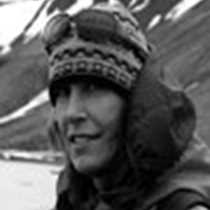Rio Ucayali: Cedro Caño & Yana Allpa
It might be that today gave us the best of all worlds in the Pacaya-Samiria. We woke up to a gorgeous, still day, the sky subtle with morning light, the river a sheen. Setting out by kayak and skiff, we found plenty to admire, from squirrel monkeys to a rare view of a cinnamon atilla—atilla the flycatcher, we dubbed it, as it sat like a conqueror in the top of the tallest tree in the river.
After breakfast, we crossed the Ucayali to the far shore and wound our way along some narrow caños to the community of Flor de Castaña. Most communities we are able to visit are right along the banks of the main rivers, but not Flor de Castaña, which gives it a lovely, quiet air. People were going about their business, doing laundry, playing, escaping the hot morning in a hammock, or, in the case of a couple of households, tending a hot fire beneath a metal tub full of shredded yucca (or manioc) that would then become a season’s worth of farina.
Many of us remarked at how integrated children were into the households—sure, some were playing a version of jump rope in the field, but some were coming back from the farmland with their fathers and others were given tasks for the farina-making which they did without any instruction, coaxing, or supervision. “Play” and “work” blurred.
We also got to see a man shaping the keel of a canoe with an adze. The log for the canoe had already been hollowed out, now, once the keel was finished, the hull would be held over a fire so that the sides of the canoe can be bent outward into the traditional, open shape. Although not many community members approached us, odd band of khaki-clad and camera-toting people that we are, the overall feeling was one of warmth and welcome. It was a treat. Flor de Castaña is one of the communities that our donated school supplies are given to, and in this instance a few gallons of gas was passed along so that new logs could be milled by chainsaw for the bridge.
On the way back to the Delfin II, some gazed upward at soaring swallow-tailed kites while others dove into the water itself, relishing the cool after the hot blaze of town. It felt great. Back aboard, we gathered to hear an overview of Amazon geology from Liz, then tucked in for lunch and siesta before our afternoon’s adventures.
The decision is perhaps unanimous: best skiff ride of the entire trip. During our siesta, a torrential downpour surrounded the boat, but the skies had cleared by the time we set out again. The cool afternoon, the rain… whatever it was, we all felt that our exploration of the Yanallpa was magnificent. Not only did we have great views of aracaris and kingfishers, but we saw three species (four for some) of monkeys! Night monkeys peered out of their daytime roost in a hollow tree and, perhaps more unexpectedly, a group of four or five monk saki monkeys clambered above us. These fruit-eating monkeys are the polar opposites of squirrel monkeys: they mate for life, they live in small family groups, and they are rarely seen clearly. Our view today was extraordinary.
After winding through the small passageways of the Yanallpa, we went back downstream on the Ucayali to a stand of palms that parrots, parakeets and macaws use as a nesting site. Wonderful! Both red-bellied and blue-and-yellow macaws were there, and we had wonderful opportunities to observe them. As has been said… best skiff ride of the trip so far. And tomorrow beckons.




